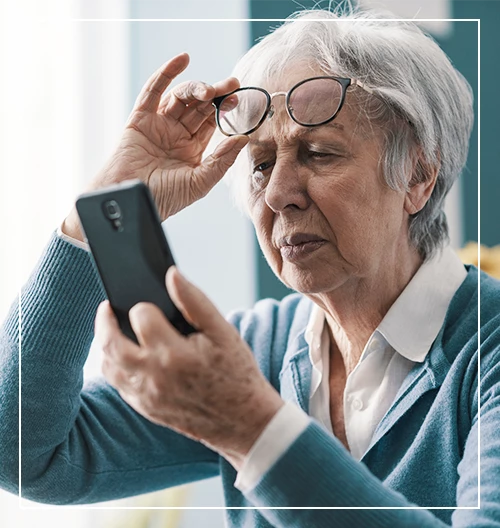Medical Management Of Age-Related Macular Degeneration

Medical Management
Comprehensive Medical Management for Age-Related Macular Degeneration
Age-related macular degeneration (AMD) is the leading cause of severe vision loss in people over 65. Nicki Sayani, MD, and the team at the North Texas Center for Sight in Denton, Texas, offer medical management for age-related macular degeneration, an essential part of preventing irreversible blindness. For prevention and comprehensive, holistic treatment of your AMD, call or schedule an appointment online today.
What is Macular Degeneration?
Age-related macular degeneration (AMD) is a disease that causes damage or breakdown of the macula, the small part of the eye’s retina that is responsible for our central vision. The macula provides visual acuity, sharp enough vision to see colors, faces, and objects in detail.
AMD is a progressive condition that affects both distance and up-close vision. You may not notice any changes to your vision until you have difficulty with activities like threading a needle or reading. By this point, irreversible damage has already occurred.
Without treatment, AMD may progress to partial or total vision loss. Expert medical management of AMD helps to slow progression and prevent more significant changes to your sight.
What causes AMD symptoms?
-
Dry macular degeneration (MD)
Dry macular degeneration is the most common type of AMD. Broken down macular tissues cause yellow-colored deposits to collect on your macula, leading to the thinning and drying out of the tissues. Dry MD may progress to wet MD. -
Wet MD
Wet MD is less common and is often more severe. Wet macular degeneration occurs when blood vessels in your eye leak and bulge into the macula. Wet MD affects the cells of the retina, creating blind spots in your vision.
What are the symptoms of AMD?
- A decrease in visual acuity
- Deposits on your macula
- Leaking or bulging of blood vessels
- Progressive changes to your macula
- Blood vessel growth in your macula
- Damage and scarring of your retina

What are the treatments for AMD?
AMD is a chronic, progressive disease. While there is no cure for AMD and vision loss isn’t reversible, recent studies show that antioxidant vitamins and zinc may help slow the impact of AMD for those with late-stage or advanced AMD. Studies suggest supplements may not be of significant benefit for those with minimal or symptom-free AMD.
Other possible treatments may include laser surgery, medications, and ongoing monitoring of disease progression. The team at North Texas Center for Sight works with you to develop a customized plan of care that helps reduce your risks and protect your vision as much as possible.
